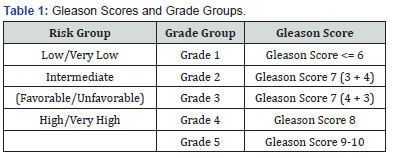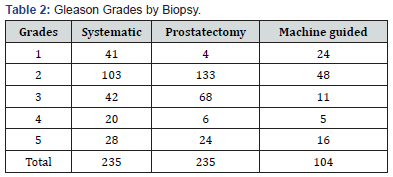On Developing Biomarkers for Detection of Biomedical Conditions
Tianyuan Guan1 and Marepalli B Rao2*
1College of Public Health, Kent State University, Kent, Ohio, USA
2Division of Biostatistics and Bioinformatics, University of Cincinnati, Cincinnati, Ohio, USA
Submission: January 17, 2024;Published: February 12, 2024
*Corresponding author: Marepalli B Rao, Division of Biostatistics and Bioinformatics, University of Cincinnati, Cincinnati, Ohio, USA, Email:raomb@ucmail.uc.edu
How to cite this article: Tianyuan G, Marepalli B R. On Developing Biomarkers for Detection of Biomedical Conditions. Biostat Biom Open Access J. 2024; 11(4): 555818. DOI: 10.19080/BBOAJ.2024.11.555818
Abstract
For the detection of a medical condition, a biomarker is needed as a preliminary detection tool. This is different from the gold standard detection procedure. Typically, biomarkers are simple to use but not accurate. Researchers strive to improve biomarkers. Two examples are discussed in this opinion piece. One is breast cancer, and the other is prostate cancer. A remarkable advancement is made in the biomarkers from mammogram to breast aspiration. We discussed some advancements made in the biomarkers for prostate cancer.
Keywords: Preliminary Detection Tool; Breast Cancer; Mammogram; Systematic Biopsy; Logistic Regression Model
Abbreviations: PSA: Prostate Specific Antigen; DRE: Direct Rectal Examination
Introduction
There are two principal approaches in detecting a medical condition. One is a gold standard procedure, and the other is a biomarker specially designed and developed for the medical condition on hand. The biomarkers are two kinds. One is categorical and the other is quantitative. As an example, consider the case of breast cancer. The gold standard procedure is breast biopsy. A part of breast tissue is cut and examined for the presence of cancerous cells in a lab. The result is unequivocal: whether cancer is present or not. However, breast biopsy is not recommended as the primary line of detection. A commonly used biomarker procedure is the mammogram, a radiological procedure. A trained radiologist reads the mammogram and pronounces whether the mammogram test is positive indicating the possibility of cancer or negative indicating the possibility of no cancer. The test is categorical (binary). The mammogram is not definitive. Its sensitivity (Conditional probability that the test is positive given that cancer is present) is 86.9% and specificity (Conditional probability that the test is negative given that cancer is absent) is 88.9% [1,2]. Typically, if a woman comes for a checkup, which includes checking breast cancer, the clinician orders a mammogram. If the test is positive, a biopsy is then ordered. If the test is negative, that will be the end of testing with the opinion that cancer is not detected. An improvement to the mammogram is now available. It is Breast Aspiration (Fine Needle Aspiration), in which needles are inserted into the breast and tissue extracted. A set of nine measurements are made from the tissues and a quantitative biomarker, which is a linear combination of the nine measurements, is formed [3,4]. Its sensitivity is 95.4% and specificity 97.7% [5].
The Case of Prostate Cancer
Detection of cancer is fraught with difficulties. If the organ involved is external, gold standard procedures are available to detect cancer definitively. For example, breast cancer can be detected by biopsy with certainty. However, if the organ involved is internal, there are virtually no gold standard procedures. For example, liver, kidney, and prostate are some of the prime examples. Some biomarkers have been developed for detection of cancers of internal organs. They are not gold standard. Prostate, which is the size of a walnut, occupies a special position among the internal organs. Some parts of the prostate could be benign, some parts cancerous, and the rest metastatic. For the detection of prostate cancer, clinicians traditionally use either Systematic and/or machine guided biopsies. In systematic biopsy, twelve needles are inserted into the prostate and tissue extracted. A trained urologist analyzes the sample and provides a Gleason score, delineating several stages of cancer including benignancy. The tissue sample could completely miss the cancerous part of the prostate! The name biopsy is a misnomer. The name biopsy connotes certainty. It is not the case here.
We sensed the inadequacy of Systematic and machine guided biopsies in detecting cancer. There is no gold standard procedure available to detect prostate cancer. The main question was how to evaluate the efficacy of systematic and MACHINE guided biopsies. We found data on patients at the University of Cincinnati with the results of Systematic and MACHINE guided biopsies along with prostatectomy (complete removal of prostate). Yes, prostatectomy allows one to judge with certainty the stage of cancer. It is a gold standard procedure and not a gold standard procedure. To know the true stage of cancer, one cannot recommend prostatectomy! There is no way one can put the prostate back into the body after prostatectomy! In the following table (Table 1), Gleason scores are converted into interpretable Grades [6]. Significant Cancer was defined as a Gleason score ≥ 7. The following table (Table 2) compares the diagnoses stemming from Systematic, Machine guided biopsies, and prostatectomy [7].


The table is revelatory. As per the prostatectomy diagnosis, only 4 out of 235 falls into Grade 1. On the other hand, as per the Systematic biopsy diagnosis, 41 out of 235 falls into Grade 1. For a substantial number of patients, cancer diagnosis is missed out! As per the machine guided biopsy, 24 out 104 falls into Grade1. If we want to classify patients into two groups (binary classification): Grade = 1 (No cancer or low-level cancer) and Grade ≥ 2 (Cancer), we can compare the performance of biopsies with prostatectomy.If we use the systematic biopsy as a biomarker, its sensitivity is 83% and specificity 50%. If we use the machine guided biopsy as the biomarker, its sensitivity is 78% and specificity 67%. We now know where the systematic and machine guided biopsies stand in the detection of cancer and No cancer or low-level cancer! [7]. Can the performance of systematic and machine guided be improved elevating their sensitivity and specificity? Yes, a quantitative biomarker is developed by considering additional factors: race; prostate volume; PSA (Prostate Specific Antigen); DRE (Direct Rectal Examination); and Family History [7]. The work is not done yet. The biomarkers are to be validated.
Conclusion
This is just one example, where the need for a quantitative biomarker is acute. There are other internal organs for which the need is there. For the prostate cancer case, machine guided biopsies have better accuracy compared with systematic biopsies when we use a logistic regression model. The models include additional predictors besides systematic biopsies and machine guided biopsies. The prostate cancer case is a single institution study. More trustworthy conclusions could be drawn from a multiinstitutional study. In the next place, the potential for selection bias and a possible lack of powered analysis associated with the retrospective nature of the study must be noted [7].
References
- (2017) Screening Mammography Sensitivity, Specificity, and False Negative Rate, Breast Cancer Surveillance Consortium.
- Pagano M, Gauvreau K, Mattie H (2022) Principles of Biostatistics, CRC Press, (3rd Edition), New York.
- Jesse CT, Sandra TH, John-Paul R (2023) Fine Needle Aspiration of Breast Masses, Stat Pearls, National Library of Med.
- Mei W, Xiaoning H, Yaping C, Guanwen S, Lehana T (2017) A Sensitivity and Specificity Comparison of Fine Needle Aspiration Cytology and Core Needle Biopsy in Evaluation of Suspicious Breast Lesions: A Systematic Review and Meta-Analysis. J Breast 31: 157-166.
- Rao, Marepalli B, Lecture Notes on Diagnostic Tests, University of Cincinnati (Notes Available on Request).
- Prostate Conditions Education Council (2023) Available online: Gleason Score - Prostate Conditions.
- Guan T, Sidana A, Rao MB (2023) Reliability of Systematic and Targeted Biopsies versus Prostatectomy, Bioengineering 10(12): 1395.






























